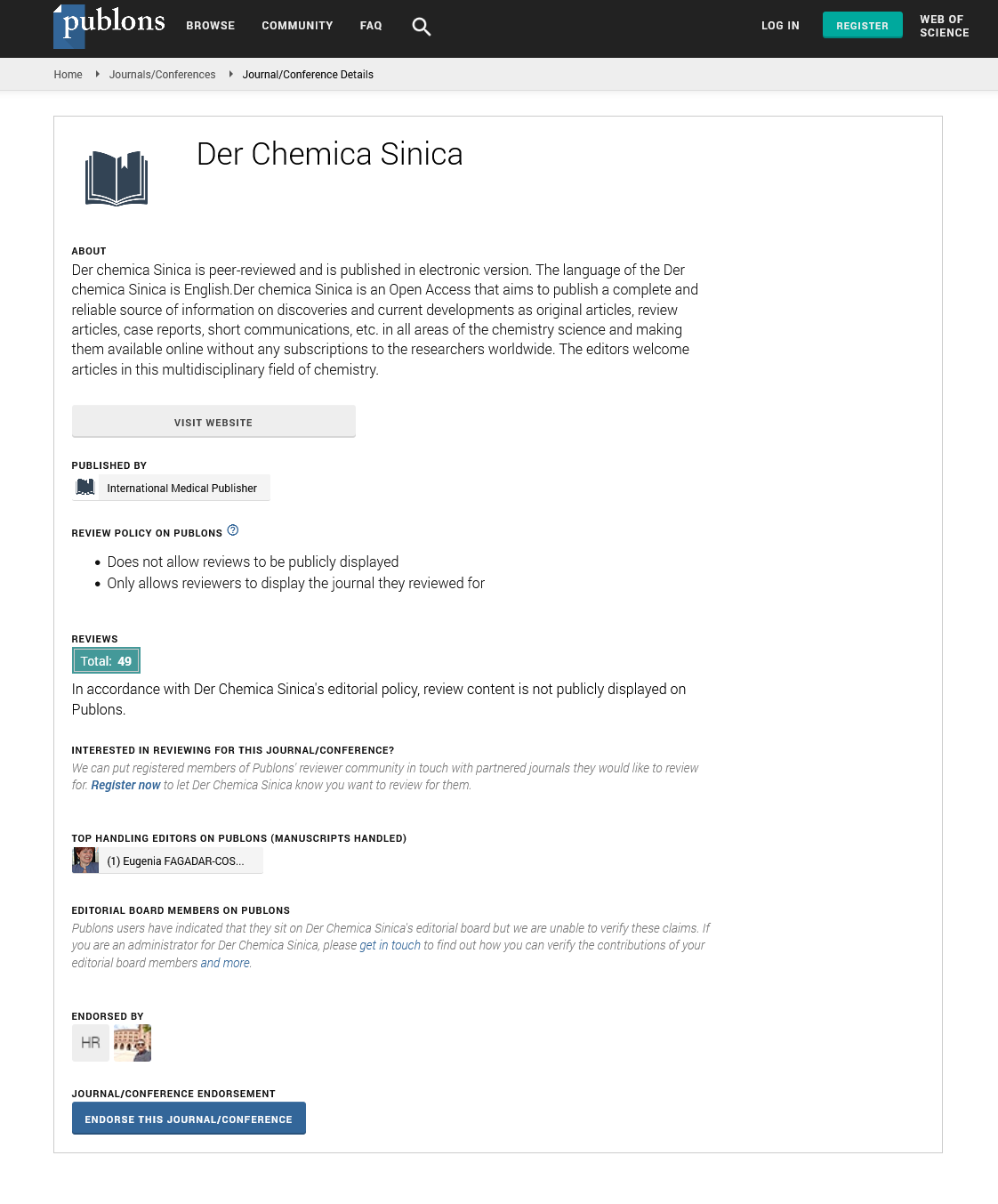Abstract
The Effect of pH and Surfactant on the Dissolution Profile of Poorly Water Soluble Drug and itÃÆâÃâââ¬Ãâââ¢s in vivo Implications
Use of surfactants has widely increased in molecular biology, in formulating novel and in improving existing pharmaceutical preparations. This is because to some degree, surfactants perform the functions of cellular membranes, emulsification, solubilization, and of transport of substances that are otherwise insoluble in living tissues. In present study, the combined effect of pH and surfactant on the dissolution profile of poorly water soluble acidic drug; Telmisartan in physiological pH environment using dissolution bath and UV spectroscopy has been reported. For the study, nonionic (polysorbate S=80, Tween T=80, polyoxy ethylene (20) cetyl ether) and cationic surfactant (CTAB) was used. Literature survey reveals that bioavailability of pharmaceuticals is highly influenced by changes in pH environment within gastrointestinal tract. Hence for this purpose, three pH media, 1, 4 and 7.4, simulating human body compartment were selected. It is well recognized that poor aqueous solubility can inhibit the efficiency of drugs while certain drugs can also exhibit drastic side effects like gastrointestinal mucosal toxicity due to their poor solubility. Therefore in order to increase the efficacy and reduce the side effects of these drugs, increasing aqueous solubility can thus be a valuable aid. Results of our study showed that cationic surfactant CTAB was found to be most effective for dissolution of Telmisartan in all pH mediums. While availability of Telmisartan significantly increased in presence of polyoxy ethylene (20) cetyl ether in pH 4. The increase in dissolution rates of Telmisartan in presence of CTAB is probably due to the creation of electrostatic interactions between acidic drugs and cationic surfactant. Improvement in dissolution rate of drug in presence of non-ionic surfactants is possibly due to the decrease in surface tension of drug brought by surfactant combined with their low critical micelle concentration (CMC) and low toxicity making them effective for drug solubilization.
Author(s): Urooj Haroon, M. Hashim Zuberi, Sameera Razi
Abstract | Full-Text | PDF
Share This Article
Google Scholar citation report
Citations : 5682
Der Chemica Sinica received 5682 citations as per Google Scholar report
Der Chemica Sinica peer review process verified at publons
Abstracted/Indexed in
- Google Scholar
- Open J Gate
- Genamics JournalSeek
- China National Knowledge Infrastructure (CNKI)
- Directory of Research Journal Indexing (DRJI)
- Publons
- MIAR
- International Committee of Medical Journal Editors (ICMJE)
- Serials Union Catalogue (SUNCAT)
- Geneva Foundation for Medical Education and Research
- Secret Search Engine Labs
- Euro Pub
- CAS (Chemical Abstracting Services)
- University of Barcelona
Open Access Journals
- Aquaculture & Veterinary Science
- Chemistry & Chemical Sciences
- Clinical Sciences
- Engineering
- General Science
- Genetics & Molecular Biology
- Health Care & Nursing
- Immunology & Microbiology
- Materials Science
- Mathematics & Physics
- Medical Sciences
- Neurology & Psychiatry
- Oncology & Cancer Science
- Pharmaceutical Sciences


